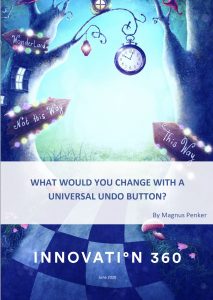What the subatomic means to the board room
Now let’s leave the laboratory behind and return to the business boardroom to see what the Many Worlds models means for you. These theories may seem remote from everyday decision-making, but you cannot go back to thinking in old ways once you are aware of the physics that operate behind the scenes in objects we use every day.
In some other universe, infinitesimally close to our own, all of your worst decisions never happened. You didn’t hit send on that sensitive email, or you put your credit card away, or you took an alternate route to work. In that universe, you didn’t do what you now regret and that made all the difference in that other world.
How does this knowledge help you?
This is how you must think about experimentation and failure. It helps you understand how to go about innovating successfully. Innovation is a hybrid creature. It is part business and part science. You must be proficient in both to make it work.
Failure is necessary, as Thomas Edison insisted, and his assessment of how innovation works is still valid. In 1910, when Edison kept failing at creating a new type of energy storage battery, Edison’s friend Walter Mallory shook his head in sympathy and blurted out, ‘Isn’t it a shame that with the tremendous amount of work you have done you haven’t been able to get any results?’
Edison then gave his most famous reply, which has been misquoted ever since, “Results! Why, man, I have gotten a lot of results! I know several thousand things that won’t work!’
The point is that innovators develop a commitment to failing until they succeed. That mindset helps you overcome the innate fear most company leaders have of taking necessary risks.
Another word for business is venture and another word for a venture is a risk. Smart managers reduce risk as much as possible, but don’t shy away from taking smart risk. Not all of those risks are going to pay off, but you will win or you will learn. That’s how you will build your own functional Universal Undo Button in our universe.
You deploy the build-measure-learn loop by taking measured risks, testing hypotheses, re-running experiments and keeping careful records of what works. Don’t waste resources on innovations until you test each hypothesis about why the innovation will work.
Change as little as possible to keep the experiments clear. Question your assumptions at every turn and try again. Risk tolerance is something you can acquire through practice, and it is also something you must acquire to succeed in an economic landscape that is always in motion and exposed to sudden, unpredictable reshuffles.


